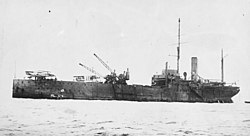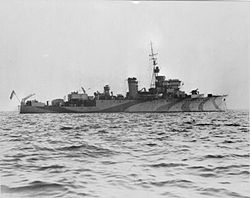Aircraft carriers
Fleet carriers


Light aircraft carriers

Escort carrier
- HMS Pretoria Castle (F61) [12]
- HMS Audacity [13]
- HMS Archer (D78) [14]
- Avenger-class escort carrier [15] [16]
- Attacker-class escort carrier [17] [18]
- Ruler-class escort carrier [19]
- HMS Activity (D94) [20]
- Nairana-class escort carrier [21] [22]

Merchant aircraft carriers
- Merchant aircraft carriers (MAC) were grain ships or tankers with a flying deck mounted on top; they were operated by civilian crew with some naval personnel. [23] [ page needed ] [24] [ page needed ]
Seaplane carriers

- HMS Pegasus - used as training ship and aircraft transport [25]
- HMS Albatross - ex-RAN, converted to "Landing Ship (Engineering)" to be repair ship for invasion of France [26]
Catapult equipped ships
- Fighter catapult ship - convoy escorts fitted with a catapult to launch a fighter [27] [28]
- CAM ship - civilian ships equipped with a catapult to launch a fighter [29]





















